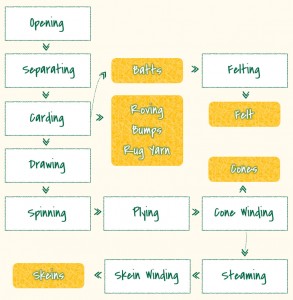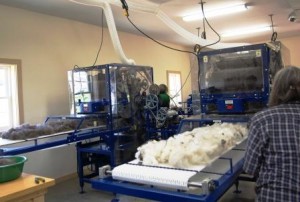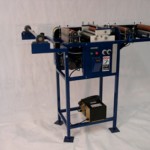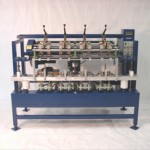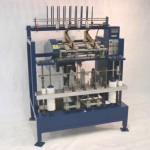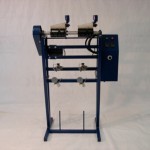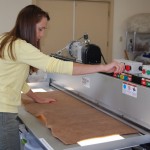How the Fiber Mill Works
Vermont Fiber Mill uses the highest quality equipment to process your animal fiber into batts, roving, bumps, rug yarn, felt, cones and skeins.
#1: Washing
The Wash system removes dirt, grease and suint from the fiber and can handle 50 pounds of fiber in a single operation. Up to three types and/or colors of fiber can be cleaned at the same time. The fiber goes through a series of washes and rinses. Correct washing is critical to ensure trouble-free processing. Water temperature and other factors vary with the type of fiber.
Next
#2: Picker
The Picker/Opener teases out entanglements and opens the fiber to give consistency in further processing. Blending of fiber types and colors can easily be accomplished at this stage giving a complete homogeneous blend.
Fiber is fed into the machine by a belt into the licker, which has small teeth, and onto the picker drum, which has quite large teeth. The fiber then enters a collection room where conditioning oils are applied.
Next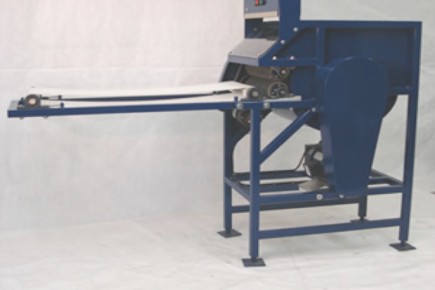
#3: Separator
The Separator gently separates unwanted coarse guard hair, vegetable matter and other contamination from fine fiber. This is not a substitute for proper skirting but does remove additional vegetation that remains in the fiber and adds softness (and therefore, value) to the end product.
The unwanted materials are collected in chambers underneath (and can be used for felt) while the prime fiber is discharged from the output end. Ours is a “large” separator so it does 2 separations in one pass. Some types of fiber require multiple passes.
Next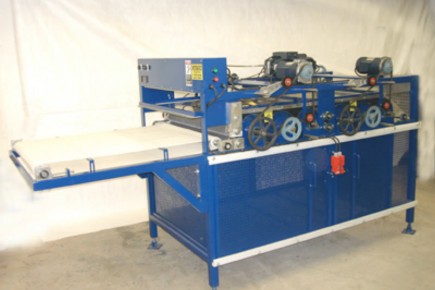
#4: Carder
The Carder is the heart of a fiber mill. It separates randomly placed fibers from each other and individually aligns these fibers, presenting them in the form of a continuous web at the output end.
Each feed of fiber is weighed and placed on the infeed belt. As the swift carries the fiber forward, those fibers that are not yet straightened are picked up by a worker and carried over the top to its paired stripper. Straightened fibers are carried by the swift to the fancy. The fancy’s card cloth is designed to engage with the swift’s card cloth so that the fibers are lifted to the tips of the swift’s card cloth and carried by the swift to the doffer. The fancy and the swift are the only rollers in the carding process that actually touch.
The slowly turning doffer removes the fibers from the swift and carries them to the comb where they are stripped from the doffer. A fine web exits the carder.
The web can be turned into batts which are used in quilts and felt making. In that case, the fiber is collected on a roller at the back of the machine. Alternatively, the web can be consolidated into roving, also referred to as sliver, which is further processed into yarns. The carder can also make rug yarn.
Next
#5: Draw Frame
The Drawframe takes multiple rovings from the Carder and creates a single roving that is consistent in size over its entire length. It also further aligns the fibers to parallel, and makes a stronger roving for ease of processing. As the roving is passed through the drawframe, it increases 2.5 times in length (or 2.8 times if a different head is used).
Fiber is typically passed twice through the drawframe. The output is monitored so that the roving is divided into equal parts for spinning.
Because the drawframe blends multiple rovings into one fiber stream, blending at this stage can create very unique end products.
Next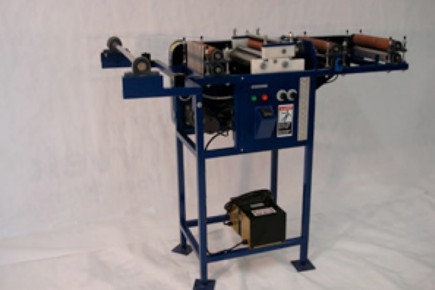
#6: Spinner
The Spinner draws in prepared rovings and directs them through a controlled drafting system, outputting an extremely consistent fiber stream. This fiber stream is then twisted into a finished single of yarn and stored on bobbins. The 8-spindle frame provides for control over yarn size, twist per inch, and production rate, which are easily changed and constantly displayed, allowing for consistent quality while maintaining production speed.
Without proper attention to details in the processes leading to spinning, the quality of the finished product may not be achieved.
Next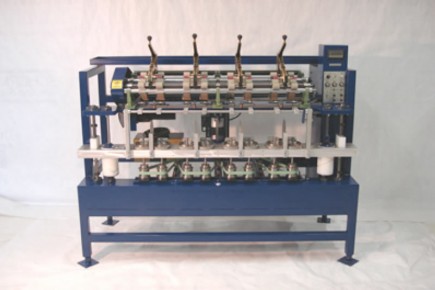
#7: Plyer
The 4-spindle Plyer takes multiple single strands to create multi-plied yarn. Having the same capabilities as the Spinner, gives that same precision and predictability. Yarn is plyed in the opposite direction of the spinning so that it does not lose its twist. Single colors or multiple colors can be plyed together.
Next
#8: Cone Winder
The Cone Winder removes the yarn from the bobbins. Yarn passed through the Cone Winder is metered and wound on cones. The Cone Winder automatically stops when the desired amount of yarn has been wound.
Machine knitters, weavers or knitters with a large project may want their yarn on cones.
Next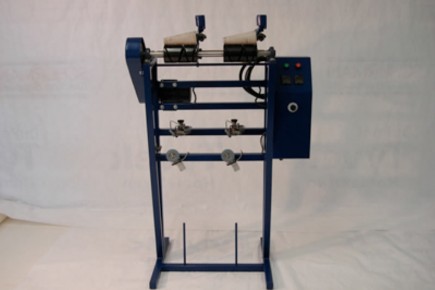
#9: Steamer
Plyed yarn is drawn through the Steamer by the Cone Winder. While under slight tension the yarn is pulled through a steam chamber and then a drying tube. This process sets the twist, and adds softness and loft.
Next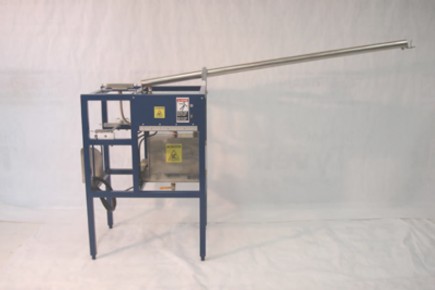
#10: Skein Winder
The Skein Winder produces a two yard or 1.5 yard skein, each side having its own precision counter. Yarn processed by the skein winder is metered and wound into skeins. Typical skein lengths are 200 yd and 300 yd, although any length can be produced.
Next
#11: FeltLOOM
The FeltLOOM provides a faster way to make felt products from carded fiber. The 66″ model has 800 barbed needles to tangle the fibers together. The FeltLoom can make fabric up to 60” or small items such as coasters.
The FeltLOOM is also available for customer use, click here to learn more.
Next
